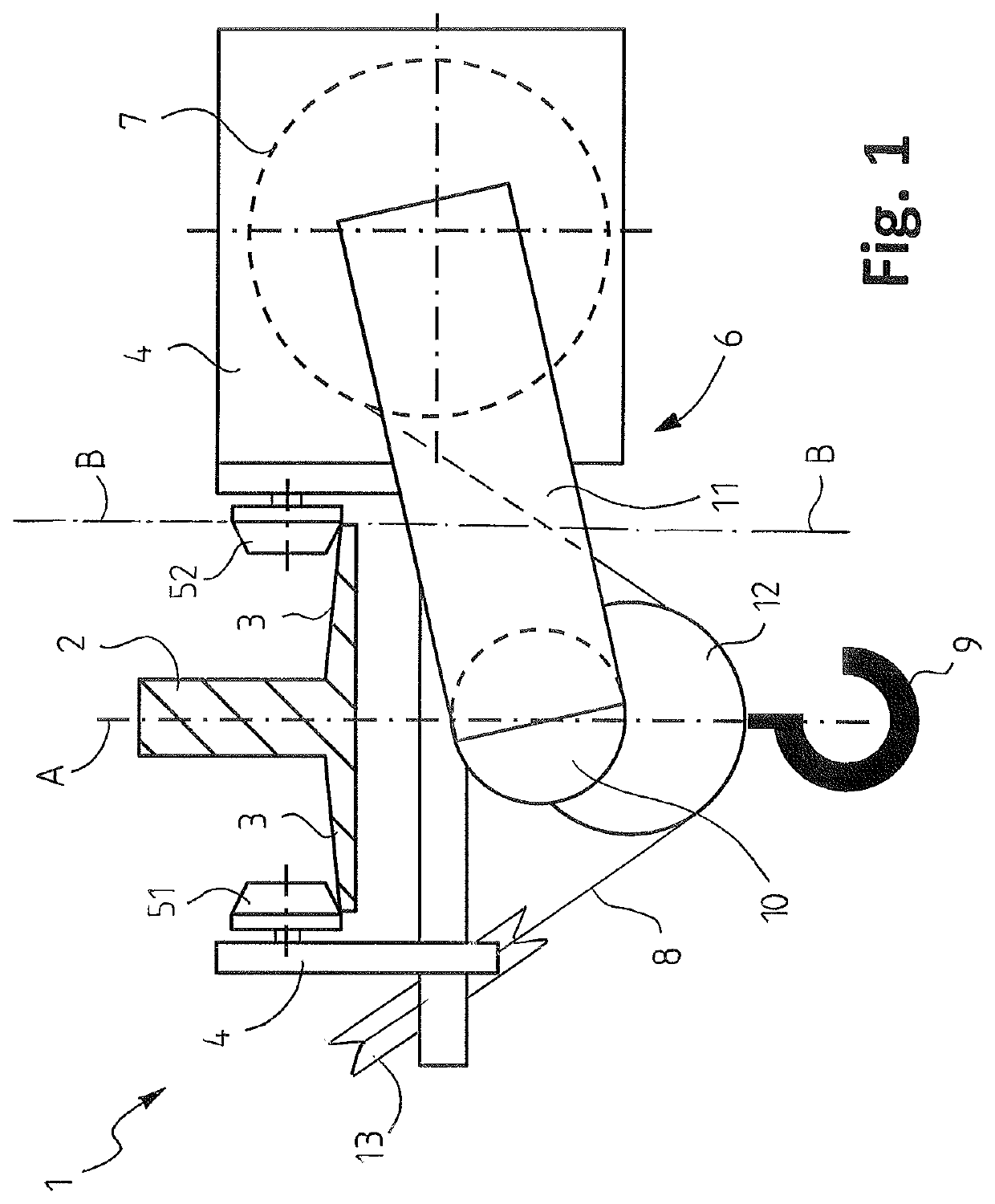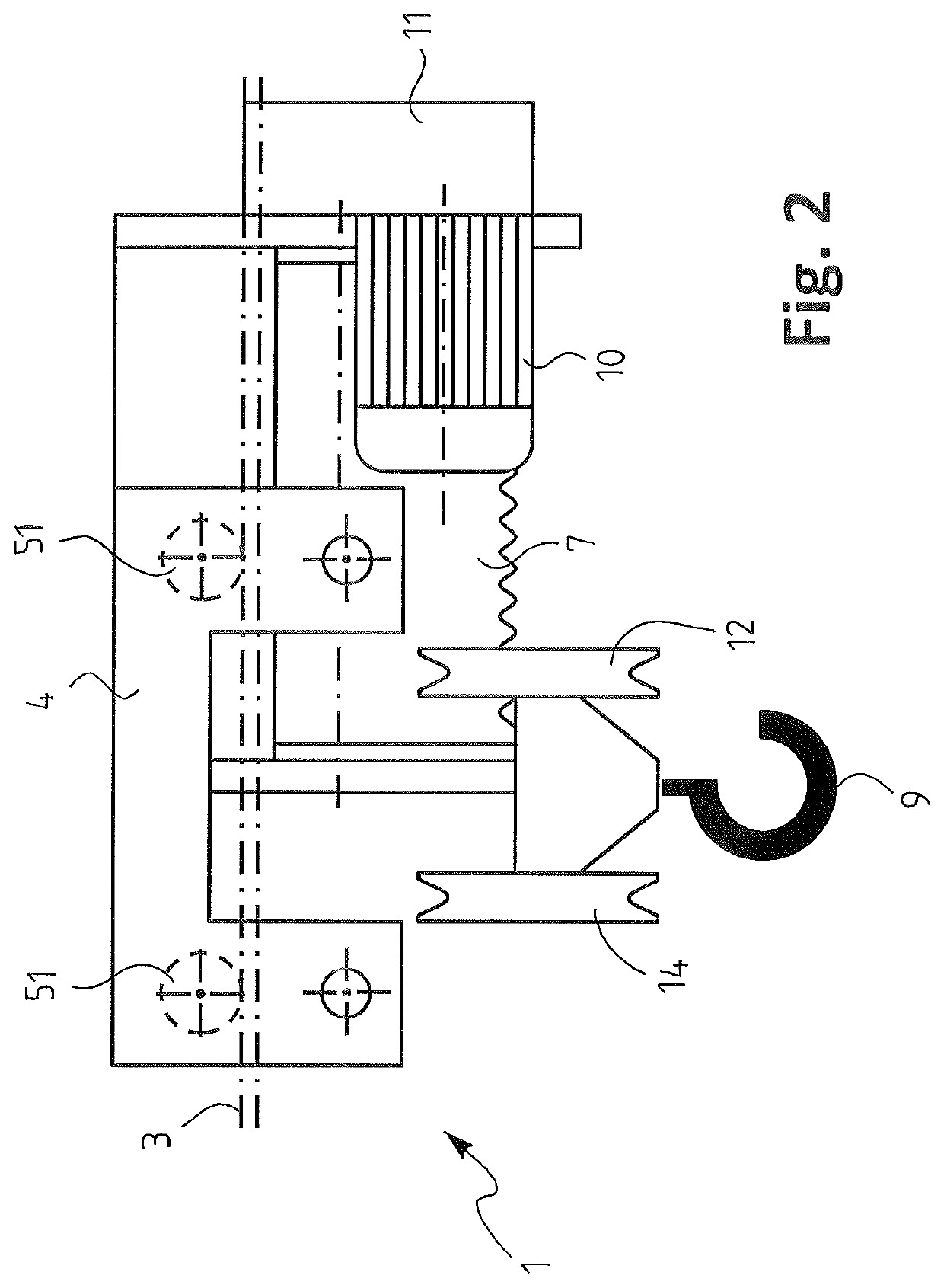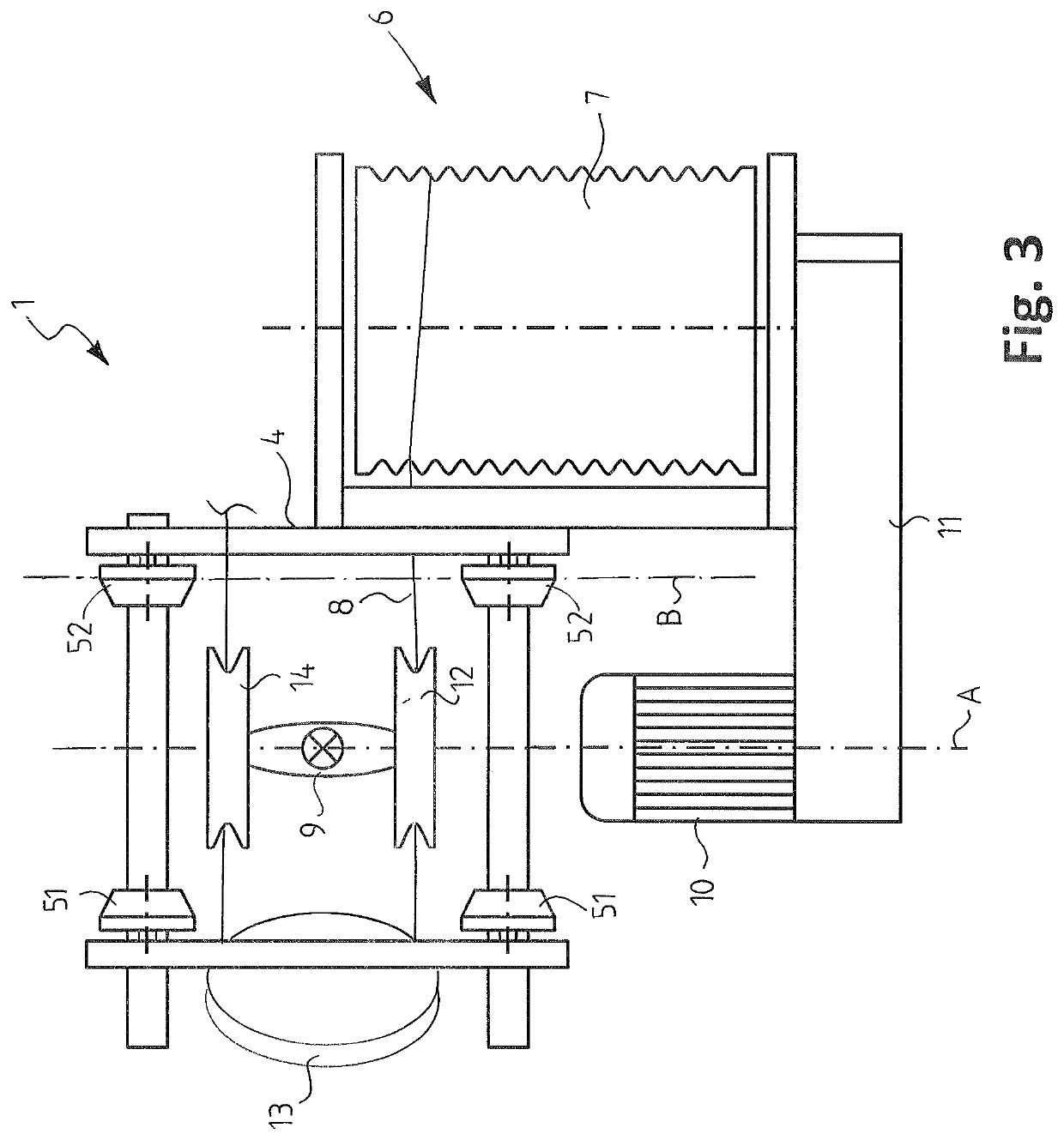Low-construction trolley for wire rope hoist
a technology of low-construction trolleys and hoists, which is applied in the direction of trolleys, hoisting equipment, load-engaging elements, etc., can solve the problems of harmful vibration, increased construction costs, and increased construction costs, so as to achieve optimal manufacturing costs, reduce construction costs, and reduce construction costs
- Summary
- Abstract
- Description
- Claims
- Application Information
AI Technical Summary
Benefits of technology
Problems solved by technology
Method used
Image
Examples
Embodiment Construction
[0018]With reference to FIGS. 1 to 3, a low construction trolley 1 of a wire rope hoist according to the invention is shown, the trolley being arranged to move along a lower flange 3 of a horizontal beam or, as in here, rail 2. The rail 2 typically forms a main support of a bridge crane, or is included in it as its lower part.
[0019]The trolley 1 is shown as a simplified schematic view that only presents what is needed to understand the invention.
[0020]The trolley 1 comprises a trolley frame 4, bearing wheels 51 and 52 and a hoisting mechanism 6.
[0021]The bearing wheels 51 and 52 are fastened to the frame 4 of the trolley and arranged to travel on the upper surface of the lower flange 3 of the rail 2, on both longitudinal edges thereof, and at least some of them are driven wheels to move the trolley 1. An actuator (a moving mechanism of the trolley) for driving the bearing wheels 51 and 52 is not shown.
[0022]The hoisting mechanism 6 comprises a rope drum 7 for a hoisting rope 8, a ho...
PUM
 Login to View More
Login to View More Abstract
Description
Claims
Application Information
 Login to View More
Login to View More - R&D
- Intellectual Property
- Life Sciences
- Materials
- Tech Scout
- Unparalleled Data Quality
- Higher Quality Content
- 60% Fewer Hallucinations
Browse by: Latest US Patents, China's latest patents, Technical Efficacy Thesaurus, Application Domain, Technology Topic, Popular Technical Reports.
© 2025 PatSnap. All rights reserved.Legal|Privacy policy|Modern Slavery Act Transparency Statement|Sitemap|About US| Contact US: help@patsnap.com



